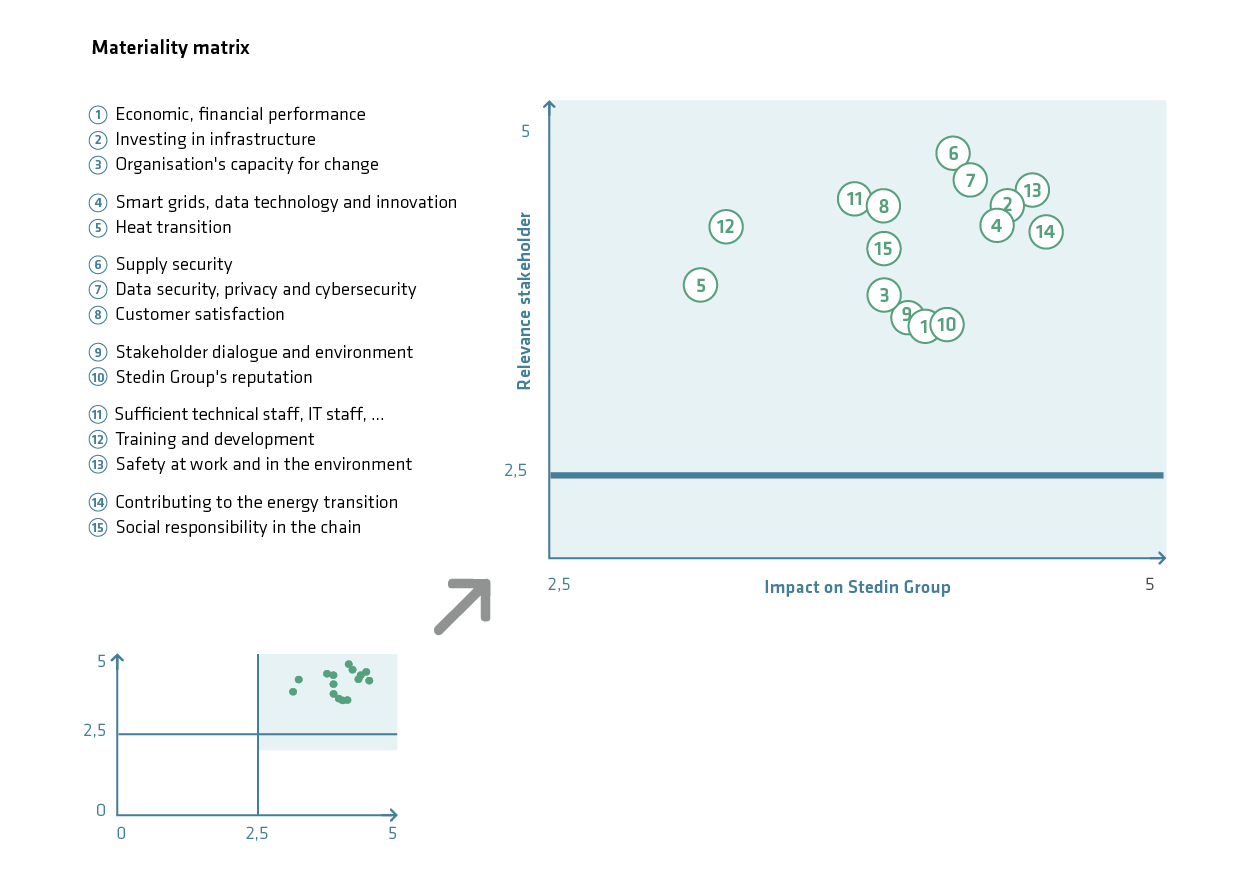Stakeholders and materiality
The challenges associated with the energy transition are not restricted to Stedin. As our stakeholders face similar challenges, it is important to maintain good contact with them, so as to share ideas and reach solutions together.
In this light, we ask them each year to provide input on Stedin's material topics: the topics that are essential for achieving our mission and strategy and are directly related to our control framework and risk management. Our materiality matrix shows how important these topics are to us and to our stakeholders.
We used the following steps to arrive at the choice of material topics and to determine the materiality matrix for 2020:
- The material topics were reviewed and ranked by the Board of Management in 2020. This approach resulted in the retention of the 15 material topics. Also, the importance of public support for the energy transition was highlighted specifically in relation to the material topic 'Contributing to the energy transition'. In addition to making the annual selection of topics, the Board of Management is responsible for management and control in relation to them. This takes place by means of reports on the adopted KPIs, each issued at their own frequency (monthly, quarterly and half-yearly).
- The Supervisory Board also reviewed and ranked the material topics in 2020. Their ranking was discussed at the Supervisory Board meeting held on 9 December 2020, after which the Board of Management and the Supervisory Board agreed on a joint ranking of the material topics.
- In a written survey, we asked representatives of our stakeholder groups to determine what impact each of the 15 material topics has on their business operations. They were also invited to add new material topics. In this way, they determine which topics we should definitely highlight in our annual report. We defined the following stakeholder groups:
- internal: the members of the Works Council and the Makers of the Future (our trainees);
- external: business customers, private customers, shareholders, local environment/communities, government and regulators, suppliers, the energy supply chain, NGOs, investors and rating agencies and partners. A total of 346 stakeholders indicated the impact of each topic.
- The result of the steps referred to above is reflected in the materiality matrix. In the Connectivity table, we show how the material topics correlate to our strategy, risks, KPIs and objectives.
We focus more closely on our stakeholders in the section 'Interaction with our environment'

